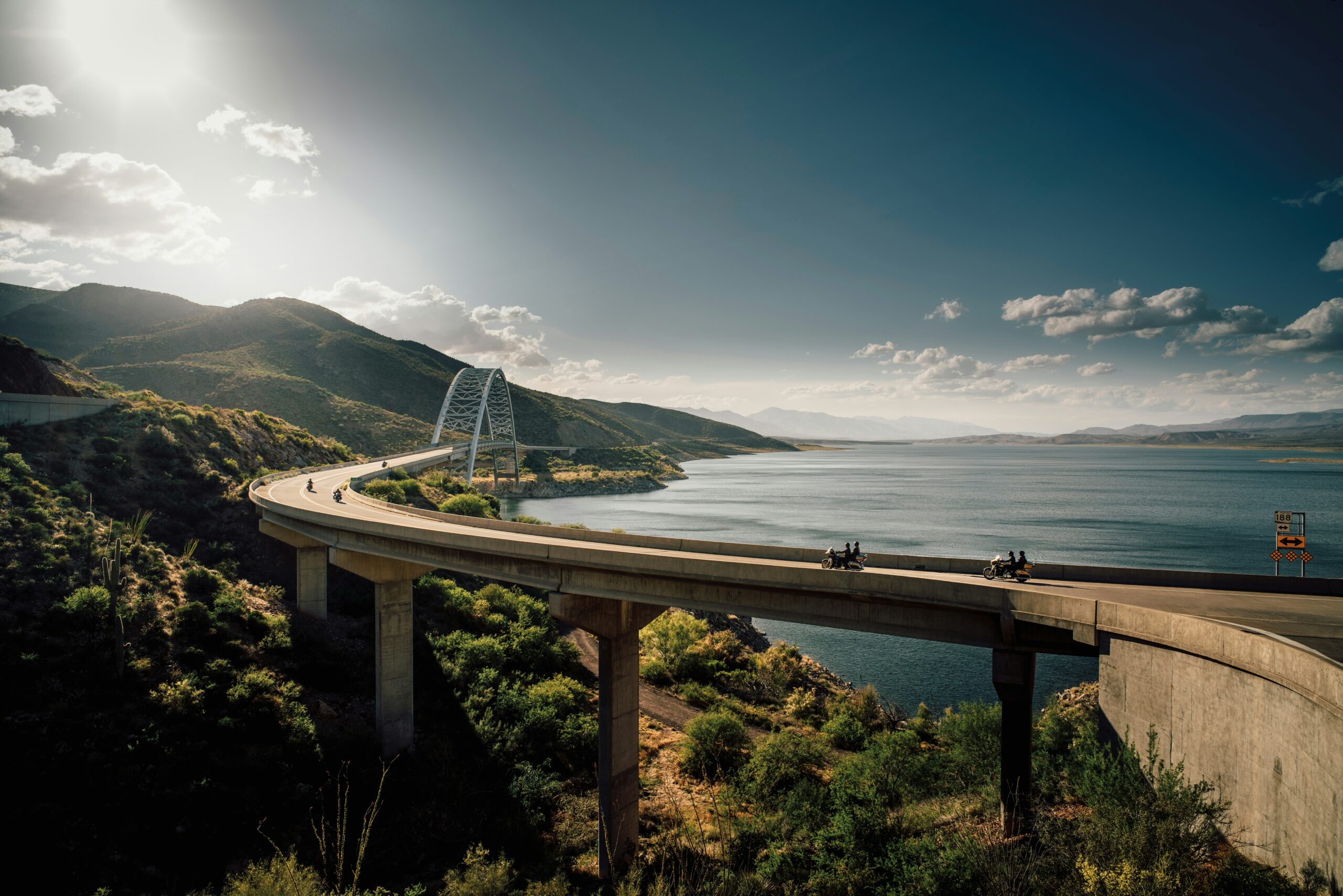Introduction: The Allure of the Open Road
Embarking on a road trip has long been celebrated as a quintessential means of exploration, offering an unparalleled sense of freedom and adventure. The open road invites travelers to chart their own course, uncovering hidden gems and experiencing the journey on their own terms. Unlike other forms of travel, road trips provide the flexibility to stop and savor a scenic vista, detour to an unexpected attraction, or simply enjoy the rhythmic cadence of the highway.
In recent years, the allure of road trips has seen a resurgence. This increase in popularity can be attributed to several factors, including the desire for customizable itineraries and the ability to maintain social distance. More than just a means to a destination, road trips have become a favored method for travelers seeking unique experiences and personal connections with the landscapes they traverse.
The charm of a road trip lies in its adaptability. Whether it’s a solo adventure, a romantic getaway, or a family vacation, traveling by car allows for a tailored experience that caters to diverse interests and preferences. From the thrill of navigating winding mountain roads to the serenity of coastal drives, each route offers its own set of adventures and memories.
Moreover, road trips provide an opportunity to engage with local cultures and communities in a manner that other travel options often do not. Stopping at quaint towns, sampling regional cuisine, and interacting with locals enriches the journey, making every mile a part of the adventure. As travelers increasingly seek meaningful and immersive experiences, the road trip remains an enduring and appealing choice.
Choosing Your Route: Popular Road Trip Destinations
Embarking on a road trip is an exhilarating way to explore diverse landscapes and cultures. Among the myriad of routes available globally, some stand out due to their historical significance, scenic beauty, and unique experiences they offer. Three iconic routes that epitomize the spirit of adventure are Route 66 in the USA, the Great Ocean Road in Australia, and the Garden Route in South Africa.
Route 66, often referred to as the “Main Street of America,” stretches from Chicago to Santa Monica, covering approximately 2,448 miles. This historic highway, established in 1926, embodies the quintessential American road trip. Travelers can explore a myriad of attractions along the way, from the bustling cityscapes of Chicago to the serene deserts of Arizona. Iconic stops include the Gateway Arch in St. Louis, the Cadillac Ranch in Texas, and the Santa Monica Pier. The nostalgic charm of Route 66, dotted with vintage motels and diners, offers a unique glimpse into America’s past.
In Australia, the Great Ocean Road is renowned for its breathtaking coastal views and dramatic rock formations. Spanning 151 miles from Torquay to Allansford, this route showcases the stunning natural beauty of Victoria’s coastline. Major highlights include the Twelve Apostles, a collection of limestone stacks rising majestically from the Southern Ocean, and the lush rainforests of Great Otway National Park. The Great Ocean Road also offers opportunities for wildlife encounters, with koalas, kangaroos, and an array of bird species frequently sighted along the journey.
South Africa’s Garden Route is another must-visit for road trip enthusiasts. Extending from Mossel Bay to Storms River, this 190-mile stretch is famed for its diverse ecosystems and picturesque landscapes. The route traverses through coastal towns, indigenous forests, and pristine beaches. Key attractions include the Knysna Heads, a pair of dramatic sea cliffs, and the Tsitsikamma National Park, known for its suspension bridge and abundant marine life. The Garden Route’s blend of natural wonders and charming towns makes it a captivating destination.
Each of these routes offers a unique travel experience, combining scenic splendor with cultural and historical richness. Whether cruising down Route 66, marveling at the Great Ocean Road, or exploring the Garden Route, these journeys promise unforgettable memories for every road trip enthusiast.
Packing Essentials: What to Bring on Your Road Trip
Embarking on a road trip requires meticulous planning, particularly when it comes to packing. Ensuring you have all the necessary items will make your journey more comfortable and enjoyable. Here’s a comprehensive guide to packing essentials, broken down into key categories: clothing, food and snacks, emergency supplies, navigation tools, and entertainment.
Clothing: Versatility is key when it comes to packing clothing. Opt for layers that can easily be added or removed depending on the weather. Include comfortable shoes, a waterproof jacket, and enough undergarments for the duration of your trip. Don’t forget to pack a hat and sunglasses for sun protection.
Food and Snacks: Having a variety of snacks can keep you energized and satisfied between meals. Non-perishable items such as nuts, granola bars, and dried fruit are ideal. Additionally, bringing a cooler stocked with fresh fruit, sandwiches, and beverages can provide healthier options on the go. Remember to include reusable water bottles to stay hydrated, especially during long stretches on the road.
Emergency Supplies: Safety should always be a priority. Pack a first-aid kit with bandages, antiseptic wipes, pain relievers, and any necessary medications. A roadside emergency kit with items like jumper cables, a tire repair kit, and a flashlight can be invaluable. A set of spare keys and a list of emergency contacts are also essential.
Navigation Tools: While many rely on smartphones for navigation, it’s wise to have a backup. Bring a physical map or a road atlas in case of poor signal or battery issues. A reliable GPS unit can be a useful addition, providing real-time traffic updates and alternative routes.
Entertainment: Long drives can become monotonous, so having entertainment options is crucial. Download a selection of audiobooks, podcasts, and music playlists to keep everyone engaged. Portable games, travel-sized board games, or a deck of cards can also provide enjoyable breaks during rest stops.
Packing efficiently involves organizing items into clearly labeled bags or containers, ensuring easy access when needed. By preparing thoughtfully, you’ll be well-equipped for an epic road trip, ready to face any adventure that comes your way.
Vehicle Preparation: Ensuring a Smooth Ride
Embarking on an epic road trip requires meticulous vehicle preparation to ensure a smooth and trouble-free journey. Before setting off, it is essential to conduct a thorough check of your vehicle’s condition. Start by examining the tire pressure, as well-inflated tires not only enhance fuel efficiency but also ensure safer handling and braking. Inspect the tread depth as well to confirm that the tires can grip the road effectively, especially in adverse weather conditions.
Next, check the fluid levels in your vehicle. This includes engine oil, coolant, brake fluid, power steering fluid, and windshield washer fluid. Low levels of any of these fluids can lead to serious mechanical issues or impair the vehicle’s performance. It is advisable to top up or change these fluids as necessary. Additionally, assess the health of your car’s battery. Ensure that the battery terminals are clean and free from corrosion, and consider testing the battery’s charge to avoid unexpected breakdowns.
Equally important is having a well-equipped roadside emergency kit. This kit should include essential items such as jumper cables, a flashlight with extra batteries, basic tools, a tire repair kit, and reflective warning triangles or road flares. Including a first aid kit, bottled water, and non-perishable snacks can also be beneficial in case of emergencies.
Regular maintenance, such as checking the condition of the brakes and ensuring the air conditioning system is functioning properly, cannot be overlooked. It is also wise to verify that all lights and indicators are operational, including headlights, brake lights, and turn signals. Finally, ensure that your vehicle’s registration, insurance, and inspection documents are up to date and easily accessible.
By completing this vehicle preparation checklist, you can significantly reduce the risk of encountering problems on the road, allowing you to focus on enjoying your journey and creating unforgettable memories.
Planning Your Itinerary: Balancing Structure and Flexibility
When embarking on a road trip, striking the right balance between a well-structured itinerary and the freedom to explore spontaneously is crucial. A well-thought-out itinerary serves as an essential roadmap, guiding you through major routes and key stops, while leaving room for unexpected adventures. This approach ensures that you make the most of your journey, blending the security of planned stops with the thrill of spontaneous discoveries.
To begin, identify the primary destinations and attractions you wish to visit. Highlight these on your route map, creating a general framework for your road trip. This ensures that you cover all your must-see locations without missing out on significant experiences. However, it’s equally important to avoid over-scheduling. Allocate ample time for each major stop to explore at a leisurely pace, allowing for unplanned detours that could lead to hidden gems.
Using travel apps and maps can significantly enhance your road trip planning. Applications like Google Maps and Roadtrippers provide detailed route information, estimated travel times, and points of interest along the way. These tools allow you to adjust your plans on the go, offering flexibility while keeping you organized. Additionally, apps like Waze can help you navigate traffic and road conditions, ensuring a smoother journey.
Moreover, consider incorporating buffer days into your itinerary. These extra days can accommodate any unforeseen delays or spontaneous decisions to extend your stay at an unexpectedly charming location. Flexibility in your schedule will enable you to immerse yourself in the local culture, explore off-the-beaten-path attractions, and create memorable experiences.
In sum, a successful road trip balances structure with spontaneity. By planning a general route with key stops and utilizing travel apps for organization and navigation, you can create a flexible itinerary that allows for both planned highlights and unexpected adventures. This approach ensures a well-rounded and unforgettable journey, combining the best of both worlds.
Accommodation Options: Where to Stay on the Road
When planning your epic road trip, choosing the right accommodation can significantly enhance your journey. There are various options available, each offering distinct advantages. Knowing the pros and cons of hotels, motels, campgrounds, and vacation rentals can help tailor your trip to fit your needs.
Hotels are often the go-to choice for many travelers, providing a range of amenities such as room service, fitness centers, and complimentary breakfasts. They are usually located in urban areas, making them convenient for city sightseeing. However, they can be pricier compared to other options, especially in popular tourist destinations. Booking in advance can sometimes secure better rates and availability.
Motels offer a more budget-friendly alternative to hotels, often situated along highways and major routes. They provide basic amenities, typically including free parking, which can be advantageous for road trippers. While motels may lack the luxury of hotels, they offer the convenience of easy access, especially for those who prefer to book accommodations on the go.
For nature enthusiasts, campgrounds present an ideal option. They allow you to connect with the outdoors and are often located in scenic areas such as national parks and forests. Campgrounds can range from primitive sites without amenities to more developed ones with showers, electricity, and water hookups. Advance reservations are recommended, particularly during peak seasons, to ensure availability.
Vacation rentals, such as those found on platforms like Airbnb and Vrbo, offer a home-like experience. These can be particularly beneficial for longer stays or for those traveling in groups, providing amenities like kitchens and laundry facilities. They may be available in various locations, from bustling cities to tranquil countryside spots. Vacation rentals often require advance booking, but they can offer a unique and personalized experience.
Ultimately, the best accommodation choice depends on your route and personal preferences. While advance booking can provide peace of mind and potential savings, being flexible and open to last-minute deals can also yield unexpected finds. Balancing comfort, convenience, and cost will help ensure that your road trip is both enjoyable and memorable.
Staying Safe and Healthy: Tips for a Trouble-Free Journey
Embarking on a road trip can be an exciting adventure, but ensuring safety and health throughout the journey is paramount. Here are some essential tips to help you stay safe and healthy on the road.
Firstly, staying hydrated is crucial. Long hours of driving can lead to dehydration, especially in hot climates. Carry plenty of water and drink regularly. Avoid excessive caffeine and sugary drinks as they can contribute to dehydration and fatigue. Instead, opt for water or electrolyte-rich beverages to keep your body well-hydrated.
Taking regular breaks is another key aspect of road trip safety. Driving for extended periods can lead to fatigue, which significantly increases the risk of accidents. Plan to stop every two hours to stretch, walk around, and rest. These breaks will help you stay alert and reduce the chances of muscle stiffness and discomfort.
Practicing safe driving habits is essential for a trouble-free journey. Always wear your seatbelt, adhere to speed limits, and avoid distractions such as using your phone while driving. It’s also important to be aware of your surroundings and practice defensive driving. Being prepared for unexpected situations can make a significant difference in maintaining safety on the road.
Health precautions should not be overlooked. Having a well-stocked first aid kit is vital. Include items such as bandages, antiseptics, pain relievers, and any personal medications you might need. Additionally, familiarize yourself with the emergency services available along your route. Knowing the locations of hospitals, clinics, and other emergency facilities can be crucial in case of accidents or health issues.
Finally, stay informed about local travel advisories and weather conditions. Check for any travel restrictions, road closures, or severe weather warnings before and during your trip. Adhering to these advisories can help you avoid potentially hazardous situations and ensure a smoother journey.
By following these safety and health tips, you can significantly enhance the enjoyment and success of your road trip, ensuring it remains an unforgettable experience for all the right reasons.
Capturing Memories: Documenting Your Road Trip
Documenting your road trip is an essential part of preserving the memories you create along the way. A travel journal is a timeless way to capture the nuances of your journey. Jot down your daily experiences, thoughts, and emotions. You can include sketches, ticket stubs, and pressed flowers to make it more personalized. Writing regularly will not only help you remember the small details but also offer a reflective space to appreciate your adventure.
Photos and videos are indispensable tools for capturing the visual essence of your road trip. Invest in a good camera or make the most of your smartphone’s capabilities. Take candid shots of landscapes, towns, and people you meet. Short video clips can encapsulate the dynamism of your journey, from the sound of waves crashing on a beach to the buzz of a local market. Compile these into a digital album or a video montage for a comprehensive visual diary.
Social media platforms provide an excellent avenue for sharing your road trip experiences in real-time. Create a unique hashtag for your journey and use it consistently across your posts. This not only organizes your content but also makes it easy for friends and family to follow along. Consider using Instagram stories, Facebook updates, or even Twitter threads to share highlights, tips, and stunning visuals.
For those more inclined towards storytelling, creating a travel blog or vlog can be highly rewarding. Blogs allow you to write detailed accounts, share itineraries, and offer advice to fellow travelers. Vlogs, on the other hand, provide a dynamic way to narrate your experiences through video, adding a personal touch. Platforms like WordPress and YouTube make it easy to start and maintain these projects. The added benefit of a blog or vlog is that it serves as a lasting archive that you can revisit anytime.
Reflecting on and sharing your journey brings a sense of fulfillment. It enables you to relive the experiences and provides a valuable resource for others planning similar trips. Whether through a journal, photos, social media, or a blog, documenting your road trip ensures that your memories remain vivid and cherished.



